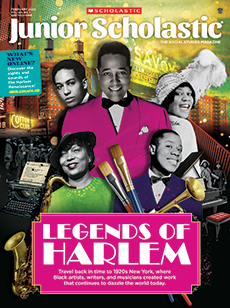Answer Close-Reading Questions
Have students write their responses, or use the Close-Reading Questions to guide a discussion.
• Which media outlet is nearly always free of bias, and why, according to Beth Heldebrandt of Ad Fontes Media? (Key Detail)
Beth Heldebrandt says the nonprofit news network C-SPAN is the only media outlet that is nearly perfectly unbiased. She says that’s because C-SPAN records everything that happens in the hall of Congress without any commentary. The setup frees the network from having to decide what to include and what not to include, a practice that can allow bias to creep in.
• What is the difference between news articles and opinion articles? (Compare and Contrast)
News articles strive to achieve an unbiased reporting of the facts, whereas opinion articles (sometimes labeled as commentary) are meant to be biased. The purpose of news articles is to inform the public. The purpose of opinion articles is to promote one perspective.
• Summarize three steps people can take to spot bias in the media. (Summarizing)
Sample response: First, people can spot bias in the media by looking for highly opinionated or emotionally charged language. Second, people can examine photos carefully, considering whether they might be intended to paint the subject of the article in an exaggerated way—positive or negative. Last, people can consider who is being quoted in a story and who isn’t. A story may be biased if it leaves out one or more important perspectives.
